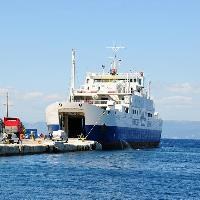(LUXEMBOURG) – Tougher safety rules and standards for passengers ships in Europe were given the final go-ahead by EU ministers Monday, as they adopted three directives to simplify and improve passenger safety.
The directives, informally agreed with the European Parliament in June this year, revise passenger ship safety rules and standards, digitalise the registration of ship passengers and create a clear framework for the inspection of ro-ro ferries and high-speed passenger craft.
“These new rules will improve the safety of people travelling on our seas,” said Estonia’s Minister of Economic Affairs and Infrastructure Kadri Simson, for the EU presidency: “But they will also simplify and speed up procedures for shipping companies, including through digitalisation, and this is good news for businesses and our economy as a whole.”
The ‘general’ directive on passenger ship safety rules and standards contains the most extensive rules on passenger ship safety in the EU, applicable to vessels travelling on domestic routes. The text sets out detailed technical requirements for ships with regard to areas such as construction, stability and fire protection.
The directive on the registration of persons on board passenger ships requires shipping companies to digitalise the registration of ship passengers, so that the exact number of passengers and other information will be immediately available for search and rescue services in the event of an accident.
The third directive – a revised inspection regime for ro-ro ferries and high-speed passenger craft – eliminates overlaps and closes regulatory gaps arising from the application by member states of different inspection regimes for these vessels.
The three directives are part of a comprehensive review of passenger ship safety which aims to improve the safety of sea travel while simplifying the current rules and cutting administrative costs.
Following today’s final vote, the legal acts will be signed by both institutions in November and published in the EU Official Journal a few weeks later. They will enter into force 20 days after publication, and member states will then have two years to incorporate the new rules into their national law.
Directive relating to safety rules and standards for passenger ships (full text)
Directive relating to the registration of persons and reporting formalities (full text)
Directive relating to inspections of ro-ro ferries and high-speed passenger craft (full text)



